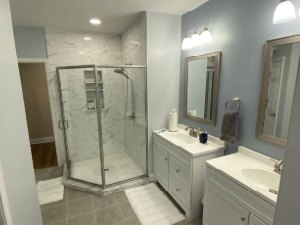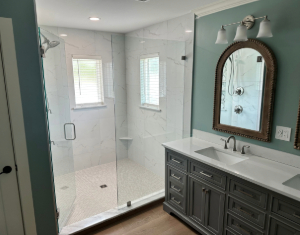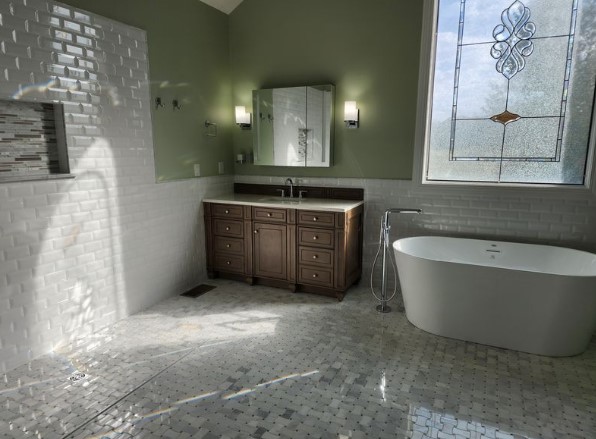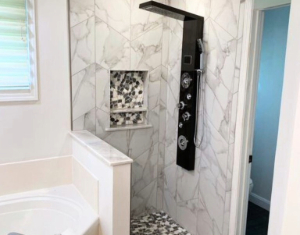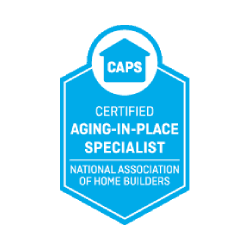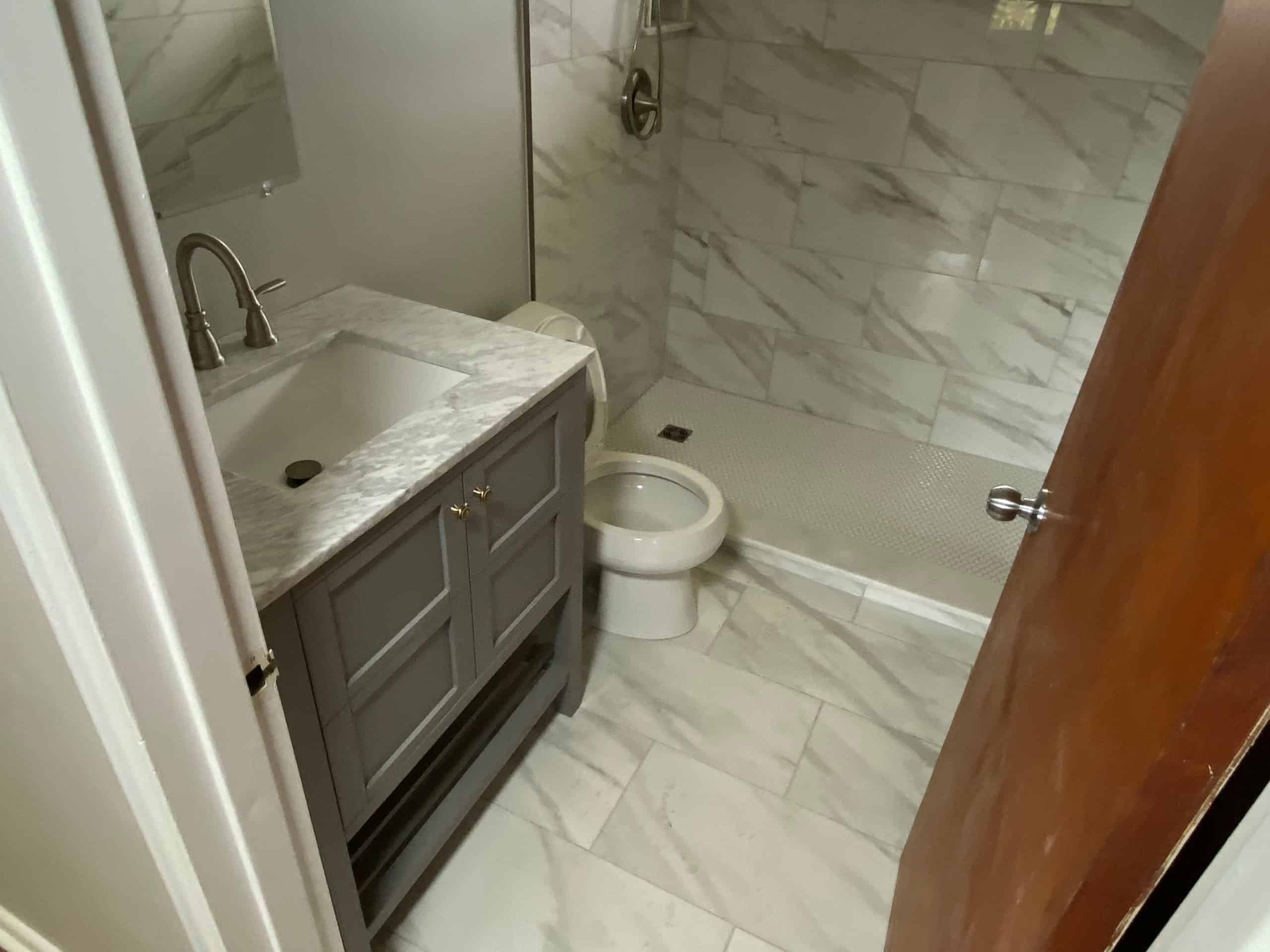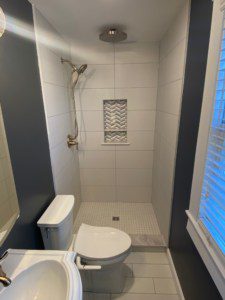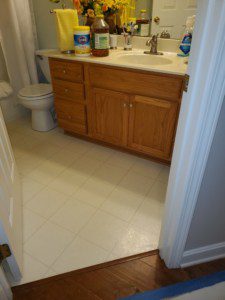There are tens of millions of Americans over the age of 65. Seniors want to stay in their homes and their communities more and more as they age, and who are we to tell them no? This is the best decision for them, but some modifications must be made to the home to ensure senior safety. Especially those living alone. Bathroom modifications are by far the most important, because that is where most falls occur. We are aging in place specialists, and have outlined some practical bathroom designs to make aging in place safe and accessible.
Non Slip Floors
The biggest hazard in the bathroom is a slippery floor. Rubber mats, non slip rugs, and anti slip stickers all help. However, we specialize in installing anti-slip tiles, and we frequently make small tiles part of a curbless shower for aging in place. Smaller tiles means more grout means better traction. Using small, anti-slip tiles with plenty of grout lines and a non slip rugs will ensure that the bathroom floor doesn’t slide out from under anyone.
Ready to decide on your aging in place bathroom designs? Call or email Flooring Masters & Professional Remodelers today for a free consultation.
Roll In or Step In Shower
Most falls in the bathroom occur stepping over a high tub wall on a slippery floor. A curbless roll in shower allows a senior loved one to roll right into the shower unassisted. A step in shower eliminates the high tub wall, and only has a small curb to contain water. Both of these options are a much safer alternative to a traditional tub shower. We install these along with small, anti-slip tiles to make them as safe as possible.
Grab Bars
Another must have for a safe bathroom for aging in place is well placed grab bars. At the very least, one going for getting in and out of the tub or shower, and two to hold steady while in the shower. Some families opt to install one over the vanity so that aging loved ones may steady themselves while at the sink.
Vanity Height
For aging family members in wheelchairs, the counter height of the vanity must be lowered so that they may access the sink and mirror. ADA vanities are 34” or shorter. At that height, someone in a wheelchair can access the sink while still seated. This makes getting themselves ready with no assistance much safer. In addition, an aging loved one who uses a walker around the house will need a floating vanity so that the wheels of their walker may slide underneath it easily, and they have access to the sink and mirror.
Let There Be Light
For someone who is aging in place, the days of using the bathroom in the middle of the night without lights are over. Night lights or motion detecting lights from the bedroom to the bathroom are required. Ample overhead lighting in the bathroom will keep them as safe as possible.
Need to explore some more aging in place bathroom designs? Call or email Flooring Masters & Professional Remodelers today for a free consultation.

